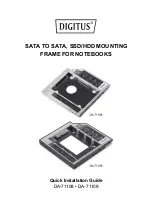
. . . . .
A C C O M P L I S H I N G T H E R E F L O W P R O C E S S
2-9317-372-00-0
Bravo™ 8105 Programming and Operations Guide
11-117
Section B: Reflow Process Considerations
Throughput
Determining
Throughput
One of the primary factors that contributes to yield is throughput. A 7–zone
machine has 40% greater throughput than a 5–zone machine, and a 10–zone
machine has 43% greater throughput than a 7–zone machine.
The conveyor speed (in inches per minute) divided by the product size determines
the typical throughput. The length of the board (in inches) plus the distance
between the boards is the product size. Generally two (2.0) inches between
boards provides a good approximation. For example, if the board is 8.0 in., and
2.0 in is added to estimate distance between boards, the product size is 10.0 in.
For a 7–zone system’s conveyor running 28.0 in. per minute, the throughput is
2.8 boards per minute. Systems with longer heating modules generally run the
conveyor at a faster speed than shorter machines. A 10–zone system’s conveyor
may run the same profile at 40.0 in. per minute. In that case the throughput is
increased to four (4) boards per minute.
Alternately, the size of boards and the number delivered to an oven per minute
determine the speed the conveyor must run to satisfy demand. The product size
multiplied by the number of boards delivered per minute determine the speed in
inches the conveyor must run. If a pick–and–place system delivers three (3) eight
(8.0) in. boards per minute to an oven, that conveyor must run at least 30.0 in.
per minute to keep up with the supply.
Summary of
Throughput
Calculations
In summary:
(Board 2.0* in.) = Product Size
System Speed / (Product Size) = Typical Throughput
(Product Size) x (#pcb’s per minute) = System Speed











































